Forestiera neomexicana
Desert Olive
Train Desert Olive as a small tree or shrub. Appealing features include the light gray bark, which contrasts nicely with its bright green leaves. Attractive yellow fall color. Canopy coverage: 50 square feet.
[Read More]Frangula alnus 'Columnaris'
Alder Buckthorn
This Buckthorn is most often grown as a vertical shrub. Leaves are glossy on slender branches. Red berries in summer turn black as they age. Canopy coverage: 28 square feet.
[Read More]Genista tinctoria 'Royal Gold'
Royal Gold Woadwaxen
The cultivar 'Royal Gold' Woadwaxen can be grown as a compact, rounded shrub or groundcover. It puts on a color show in summer with a profusion of pea-shaped, golden yellow flowers. Accepts almost any soil, even poor soil, as long as it is well drained. Canopy coverage: 7 square feet.
[Read More]Hibiscus moscheutos
Rose Mallow
Rose Mallow is a shrubby perennial that can reach up to a towering 8 feet high. However, most hybrids fall into the 4-foot-high range. Very large flowers up to 12 inches across in a range of bright colors is a primary attraction. Dies to the ground in winter. Canopy coverage: 13 square feet.
[Read More]Hibiscus syriacus
Rose of Sharon
When in bloom, Rose of Sharon reminds one of hollyhocks. It can be pruned to suit the needs of the landscape, from small tree to large, natural shrub or screen. Flowers are mostly shades of pink. Leaves have a coarse texture. Best with some protection from the sun in hot summer regions. Canopy coverage: 28 square feet.
[Read More]Holodiscus dumosus
Rock Spirea
Rock Spirea is a well-behaved shrub admired for its late spring and early summer flowers. They are small, white to cream, and appear in delicate clusters at the ends of branches, turning pinkish then reddish brown, remaining on the plant well into winter. Accepts most any soil if well drained. Canopy coverage: 13 square feet.
[Read More]Hypericum calycinum
Mounding St. John's Wort, Aaron's beard
Fast, aggressive growth makes St. John's Wort a worthy groundcover, including slopes for erosion control. Provide afternoon shade and regular summer water in warm summer regions. It roots rapidly by underground stems, so it can be invasive. Cut back dormant plants for renewed growth in spring. It often dies to the ground in cold-winter regions. Canopy coverage: 3 square feet.
[Read More]Juniperus chinensis 'Sea Green'
Sea Green Juniper
You will notice this shrub Juniper in the landscape due to its fountainlike form. In addition to being an attractive specimen plant, it makes an admirable hedge or medium-sized screen. Best with some protection from the sun in hot summer regions. Canopy coverage: 28 square feet.
[Read More]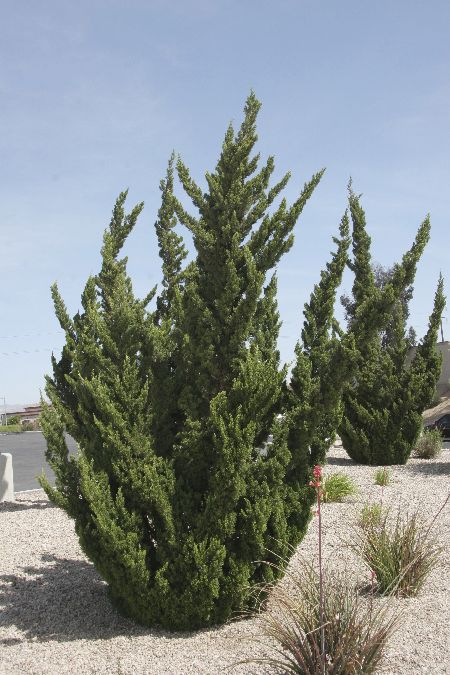
Juniperus chinensis 'Torulosa'
Juniper
Junipers are available in an extremely wide range of sizes, forms and foliage colors. They are easy-care, versatile plants once established. Avoid the temptation to prune or shape them—allow plant to maintain its natural form. Popular shrub types include 'Torulosa' and 'Pfitzerana'. Canopy coverage: 79 square feet.
[Read More]Juniperus communis
Common Juniper
Common Juniper is a workhorse shrub, particularly in tough conditions, including cold-winter climates. Resist the temptation to prune or shape Junipers and allow plants to maintain their natural form. Many improved selections are available; check locally. Canopy coverage: 28 square feet.
[Read More]Juniperus osteosperma
Utah Juniper
Utah juniper can be trained as a tree or large shrub. Despite its common name, it is the most common juniper in Arizona. Accepts dry rocky soils. Canopy coverage: 314 square feet.
[Read More]Juniperus sabina 'Buffalo'
Buffalo Juniper
Buffalo Juniper has appealing, bright green to olive green foliage. Leaves grow on long stems that spread horizontally close to the ground, forming a tight-knit mat. Accepts tough conditions. Attractive when it drapes and trails over ledges. Canopy coverage: 50 square feet.
[Read More]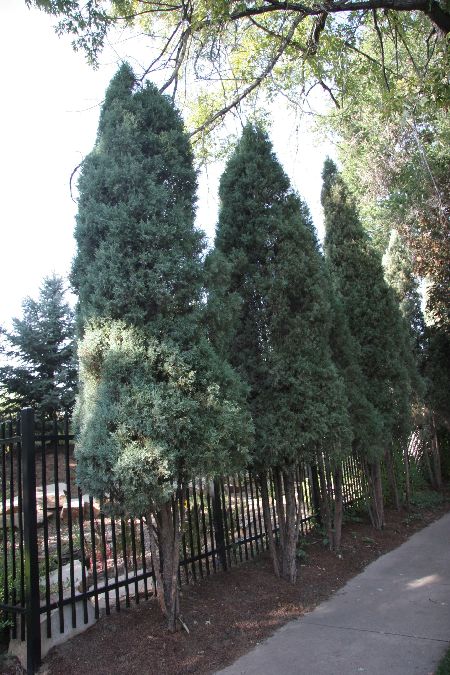
Juniperus scopulorum
Rocky Mountain Juniper
Many different selections of Rocky Mountain Juniper are available, with variable forms, textures and foliage color. Look for 'Skyrocket', blue-green foliage; 'Gray Gleam', blue-gray foliage, 'Blue Haven', deep blue-gray foliage; and 'Tolleson's Blue Weeping', drooping form with blue-gray leaves. Canopy coverage: 314 square feet.
[Read More]Kolkwitzia amabilis
Beautybush
A profuse bloomer during spring and into summer, Beautybush is grown as a specimen, colorful background, screen or hedge. Pink flowers have a yellow throat and are bell-shaped. Canopy coverage: 113 square feet.
[Read More]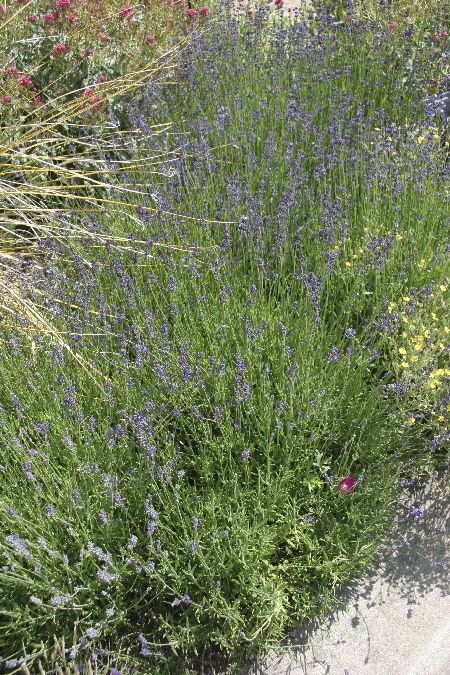
Lavandula angustifolia 'Munstead'
English Lavender
English Lavender is the most common Lavender and considered to be one of the easiest to grow. Flowers are highly fragrant. The species is shrublike and reaches 3 feet high and as wide. 'Munstead' is a dwarf form that grows to 1-1/2 feet high and as wide. Also look for 'Hidcote', with deep purple flowers. Canopy coverage: 3 square feet.
[Read More]Lespedeza thunbergii
Bush Clover
Bush Clover is not reliably cold hardy below -10F to- 20F, but regrows quickly in spring following cold damage. Or cut to the chase and prune back plants in late winter. Arching, semi-woody growth. Canopy coverage: 50 square feet.
[Read More]Lonicera x brownii 'Dropmore Scarlet'
Scarlet Honeysuckle
Provide support if you want a vine. Left to its own devices, Scarlet Honeysuckle tends to sprawl to become a mounding groundcover or even a small shrub. Canopy coverage: 79 square feet.
[Read More]Lonicera x heckrottii
Goldflame Honeysuckle
Goldflame Honeysuckle grows as a twisting form that can be semievergreen or deciduous and grown as a vine or small shrub. Flowers are fragrant. 'Goldflame' is an improved selection. Canopy coverage: 177 square feet.
[Read More]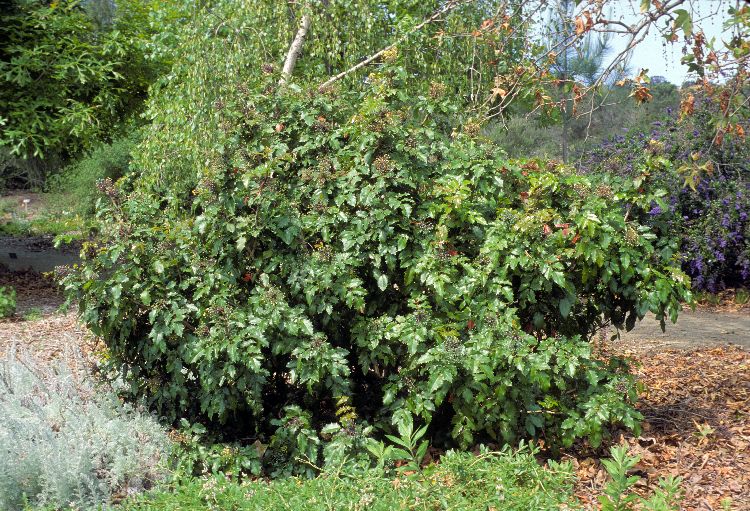
Mahonia aquifolium
Oregon Grape Holly
The leaves of Oregon Grape Holly change colors with the seasons. They are bronze when new, turning purple or bronzy hues in winter. Showy yellow spring flowers are followed by black berries in summer. Canopy coverage: 20 square feet.
[Read More]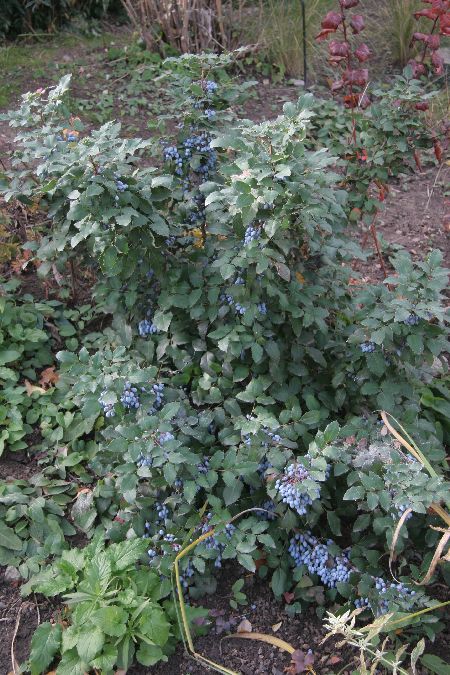
Mahonia aquifolium 'Compacta'
Compact Oregon Grape Holly
Compacta' is a smaller version of Oregon Grape Holly, ideal for small-space locations. Like its big brother, the leaves change colors with the seasons. They are bronze when new, turning purple or bronze in winter. Showy yellow spring flowers are followed by blue-black berries in summer. Canopy coverage: 7 square feet.
[Read More]Mahonia repens
Creeping Oregon Holly
This Mahonia can be grown as a small shrub or groundcover. Hollylike leaves are dark blue-green, taking on reddish to bronze shades in winter. Yellow flowers in clusters are followed by blue berries that look like grapes. Accepts sandy to heavy clay soils. Canopy coverage: 3 square feet.
[Read More]